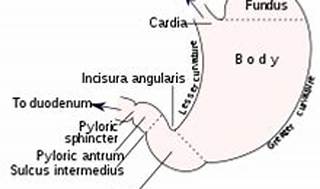Parents of a school-age child with hemophilia ask the nurse, "Which sports are recommended for children with hemophilia?" Which sport should the nurse recommend?
Soccer.
Swimming.
Basketball.
Football.
The Correct Answer is B
Choice A rationale:
Soccer involves running, sudden stops, and potential collisions, which can increase the risk of injuries and bleeding in children with hemophilia. While moderate exercise is generally beneficial for individuals with hemophilia, activities with a high risk of trauma, like soccer, should be avoided to prevent bleeding episodes. Therefore, soccer is not the recommended sport for children with hemophilia.
Choice B rationale:
Swimming is a highly recommended sport for children with hemophilia. It is a low-impact exercise that improves cardiovascular health, strength, and flexibility without putting excessive stress on the joints. Swimming also reduces the risk of bleeding episodes, making it a safe and suitable choice for individuals with hemophilia.
Choice C rationale:
Basketball involves rapid movements, jumping, and physical contact, all of which can increase the risk of injuries and bleeding in children with hemophilia. Engaging in sports that involve frequent collisions or physical impact can lead to joint bleeds and other complications in individuals with hemophilia. Therefore, basketball is not the recommended sport for children with hemophilia.
Choice D rationale:
Football, similar to soccer and basketball, involves intense physical contact and rapid movements, making it a high-risk sport for children with hemophilia. Engaging in such activities significantly increases the likelihood of bleeding episodes and injuries. Therefore, football is not the recommended sport for children with hemophilia.
Nursing Test Bank
Naxlex Comprehensive Predictor Exams
Related Questions
Correct Answer is C
Explanation

Explore
The correct answer is choice C. Visible peristalsis and weight loss.
Choice A rationale:
Abdominal rigidity and pain on palpation are not typically indicative of pyloric stenosis. These symptoms could be associated with a variety of other gastrointestinal conditions.
Choice B rationale:
A rounded abdomen and hypoactive bowel sounds are not specific to pyloric stenosis. These symptoms could be seen in various gastrointestinal disorders.
Choice C rationale:
Visible peristalsis and weight loss are classic symptoms of pyloric stenosis. The condition causes a narrowing of the opening from the stomach to the small intestine, preventing food from passing through. This leads to vomiting after feeding, persistent hunger, and weight loss since very little food passes to the small intestines.
Choice D rationale:
Distention of the lower abdomen and constipation are not typically indicative of pyloric stenosis. These symptoms could be associated with a variety of other gastrointestinal conditions.
Correct Answer is C
Explanation
Choice A rationale:
Ribbon-like stools are not characteristic of intussusception. Intussusception is a medical emergency where one portion of the intestine invaginates or telescopes into another. This condition can lead to intestinal obstruction and compromised blood flow, causing severe abdominal pain, vomiting, and bloody stools. The characteristic stool appearance associated with intussusception is "currant jelly" stools. These stools contain mucus, blood, and sloughed mucosal tissue, giving them a characteristic dark, sticky, and jelly-like appearance. This occurs due to the mixture of blood and mucus within the intestines.
Choice B rationale:
Hard stools positive for guaiac indicate the presence of occult blood in the stool, but this finding is not specific to intussusception. Occult blood in the stool can be a sign of gastrointestinal bleeding from various causes, such as ulcers, gastritis, or colorectal polyps. It is not a characteristic feature of intussusception.
Choice D rationale:
Loose, foul-smelling stools are nonspecific and can occur due to various gastrointestinal disorders, dietary issues, or infections. This description does not specifically indicate intussusception.
Whether you are a student looking to ace your exams or a practicing nurse seeking to enhance your expertise , our nursing education contents will empower you with the confidence and competence to make a difference in the lives of patients and become a respected leader in the healthcare field.
Visit Naxlex, invest in your future and unlock endless possibilities with our unparalleled nursing education contents today
Report Wrong Answer on the Current Question
Do you disagree with the answer? If yes, what is your expected answer? Explain.
Kindly be descriptive with the issue you are facing.
